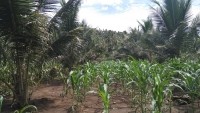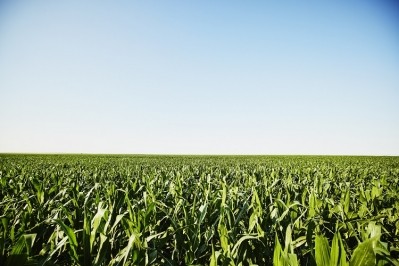IPCC report findings suggest how food production must change to cope with climate crisis

Globally, according to the new report released by the IPCC, between 3.3 and 3.6 billion people live in areas that are vulnerable to climate change. Many of these people are involved in food production, from agriculture to fishing.
The food supply chain is inexorably bound up with climate change. On the one hand, industrialised agriculture is a major cause of climate change, with animal agriculture alone making up 20% of carbon emissions.
On the other hand, poorer farmers and fishers often suffer profoundly at the hands of climate change, their livelihoods devastated by natural disasters and changing ecosystems.
Food production, suggests the findings of the IPCC report, must change profoundly if the world is to reach net-zero.
Climate threats to worldwide food production
The affects of climate change on food production are, according to the IPCC, many and profound.
For example, climate change has seen an increase in heatwaves and agricultural and ecological drought, in turn causing crop failures globally. The results of this are seen clearly in the drought in the Horn of Africa, particularly in Somalia, where drought has resulted in famine due to crop failure.

The yield of some crops, such as maize, is predicted to fall as much as 35% in some parts of the world if warming gets up to 1.5-2°C. The maize yield could decrease as a response to changes in rainfall, humidity, wind, and overall temperature.
Climate change doesn’t just risk impacting agriculture but fishing as well. In many parts of the world, particularly off the coast of Australia, the yield of fisheries could fall as much as 35%. This is largely a response to ocean warming, with ocean acidification also affecting marine life.
"The IPCC report shows global warming is already killing people, destroying nature, and reducing food security - and time is running out,” Lim Li Ching, Member of the International Panel of Experts on Sustainable Food Systems, told FoodNavigator. “Increasingly extreme floods, storms, droughts and heat are already exposing millions of people to acute food insecurity - especially impacting Global South countries, Indigenous Peoples and small-scale food producers who did not cause this crisis. Every fraction of a degree of warming raises the risk of staple crop failure in major food producing countries - this would spell unprecedented hunger.”
"Every fraction of a degree of warming raises the risk of staple crop failure in major food producing countries - this would spell unprecedented hunger.”
How to protect the supply chain
It is important to protect the global food supply chain, particularly agriculture, from the effects of climate change.
For example, the report suggests using early warning systems, which use integrated communication systems to help people and communities prepare for destructive climate-related events. Sufficient warning systems will give farmers adequate time to prepare for these events.
Another method is soil moisture conservation, the process of extracting as much moisture from the soil as one can in order to ensure as little as possible is wasted. This helps farmers in drought-hit parts of the world, where water for irrigation is more scarce.
Public perception
According to the report, some sustainable agricultural practices, such as reducing food waste and improving forest and crop/grassland management, are generally supported by the public.
Land restoration is essential for rejuvenating land and making it tenable for crop production once again. Around 250 million hectares of agricultural land has been pledged for land restoration by 115 countries, and once restored could provide additional room for crops and reduce food scarcity. Land can be restored by providing organic manures and mineral fertilizers, planting trees, and rotating crops.
Urban agriculture – the growing of agricultural crops in urban environments – was also suggested by the report as a good climate mitigation strategy. Planting crops in urban areas improves their soil’s capacity for water infiltration, enhancing its ability to manage storm water runoff and thereby increasing groundwater. As well as this, urban agriculture saves a lot of energy in the transportation of crops from rural areas, and provides city dwellers with easily accessible food.

Finally, the report suggests rebuilding fisheries. “Rebuilding overexploited or depleted fisheries reduces negative climate change impacts on fisheries . . . and supports food security, biodiversity, human health and well-being.”
Make agriculture green again
Agriculture is far from innocent in the climate crisis. To slow down climate change itself agriculture, one of the biggest contributors to greenhouse gas emissions, must be transformed.
According to a previous report by the IPCC, agriculture is directly responsible for up to 8.5% of greenhouse gas emissions. The main causes of this are the release of nitrous oxide from agricultural soils, and the release of methane from manures and livestock. This doesn’t even take into account the impact of deforestation in countries such as Brazil, much of which is done so that large agrobusiness can use the cleared land for crops.
But there are ways of protecting the agricultural process whilst maintaining sustainability. One of the primary ways this can be done, the report suggests, is sustainable agricultural intensification.
Scaling back agriculture is not an option. To feed the world’s rapidly growing population, it needs to increase. Thus, the report also suggests sustainable agricultural intensification, the increase of agriculture in sustainable ways. There are many ways this can be done, such as, the use of permanent soil cover and crop rotation to both increase yields and fix land degradation.
Indigenous Knowledge
Indigenous knowledge can be vital to helping us mitigate the effects of climate change and use agricultural practices in a sustainable way.
Agroforestry also provides a way of doing agriculture sustainably. Agroforestry is when agricultural crops and forest life are deliberately grown to share the same piece of land, and livestock are allowed to graze on said land. Quite contrary to the idea that forest needs to be cleared away for agriculture to thrive, agroforestry posits that forest life and agriculture can exist harmoniously.

The report also suggests the conservation of high-carbon ecosystems, such as peatlands, wetlands, and rangelands. Ensuring that these areas, which are often used for agriculture, do not release significant reserves of greenhouse gasses, is vital to reducing the overall affect of agriculture on climate change in general.
“Transforming industrial food systems - characterised by fossil fuel dependent, land-use changing, monoculture practices - represents the single greatest opportunity to reduce greenhouse gas emissions and build more sustainable, resilient and fair food chains,” Li Ching told us.
"Building diverse, resilient and 'agroecological' food and farming systems that work with nature is crucial to adapt to the droughts, heatwaves and storms to come.”
A sustainable diet
Finally, the report also stresses the importance of sustainable diets in combatting the effects of climate change.
Because of the significant impact of the meat industry on climate change, many believe that one of the most sustainable diets is a plant-based one. Shifting to plant-based diets can, in the long-run, reduce the need for land for cattle, freeing up space for reforestation and ecosystem restoration.
“The IPCC synthesis report highlights the need to shift to more plant-based diets to reduce [greenhouse gas] emissions from the agriculture sector and meet the Paris Agreement of keeping below 1.5C,” said Raphaël Podselver, Director of UN Affairs at ProVeg International.
However, Podslever criticises the report for not clearly addressing the need for alternative proteins. “Direct recommendations from past reports exploring the potential of alternative proteins to immediately mitigate the impact of emissions from food systems were not mentioned in the synthesis,” said Podslever.
As well as switching to sustainable diets, the report also recommends cutting down on food waste. Around a third of the food produced in the world is wasted, meaning that more food than necessary is produced, emitting more greenhouse gasses into the atmosphere. On top of this waste, food in landfill produces methane, a greenhouse gas far more potent than carbon dioxide.









